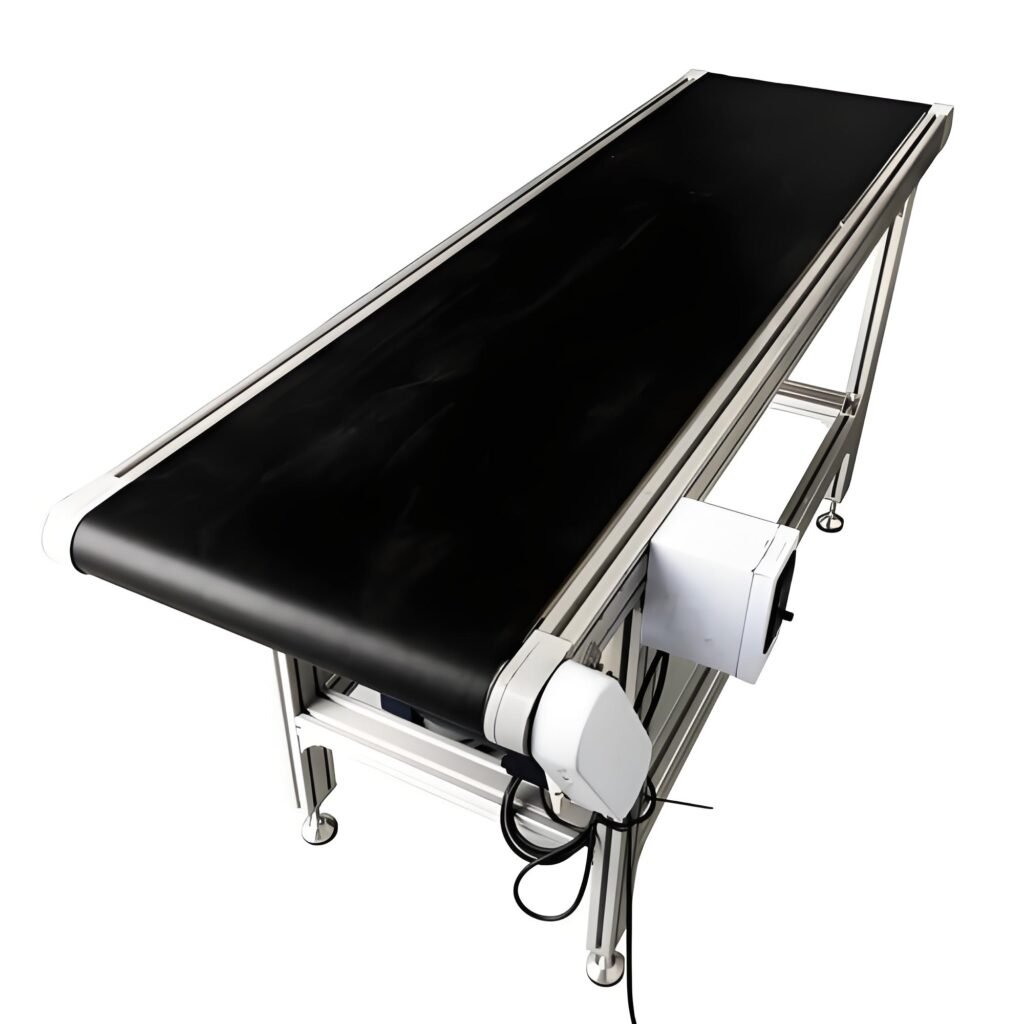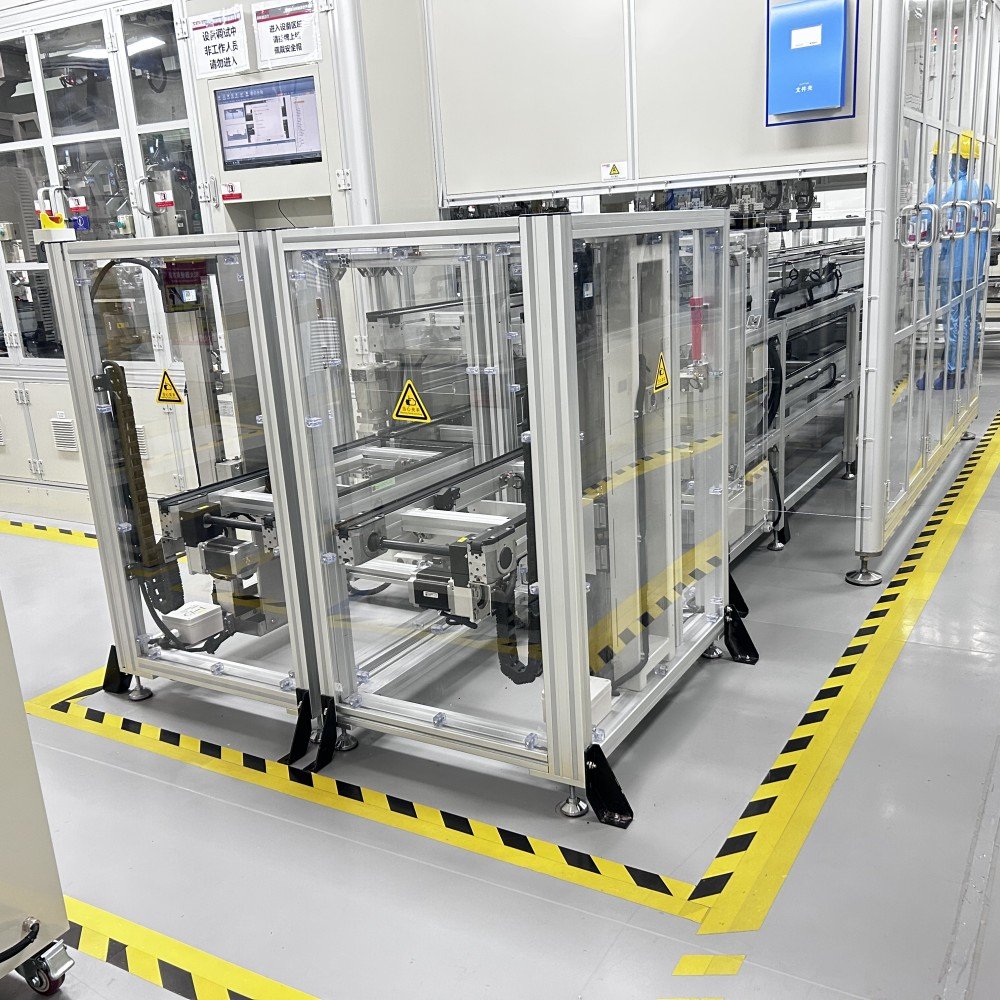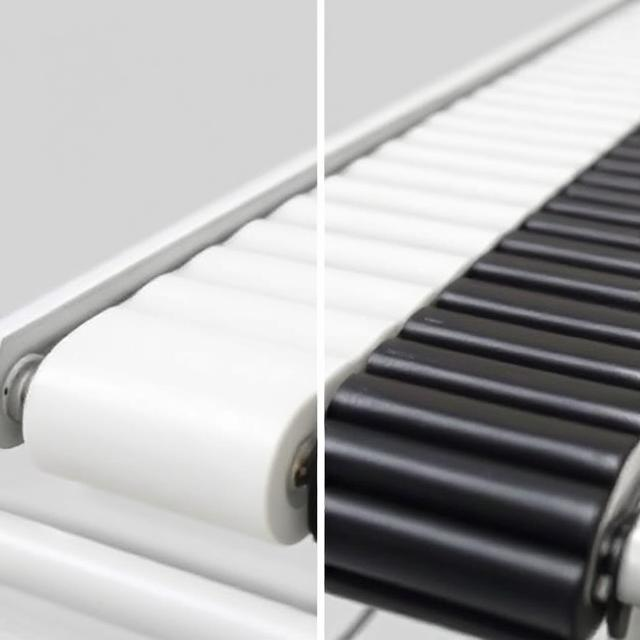Table of Contents
- Introduction
- Factors That Affect Conveyor Belt Lifespan
- 1. Material and Quality of the Belt
- 2. Type of Conveyor System
- 3. Operating Environment
- 4. Maintenance and Care
- 5. Load and Usage Frequency
- Average Lifespan of Different Types of Conveyor Belts
- Rubber Conveyor Belts
- PVC Conveyor Belts
- Metal Conveyor Belts
- Modular Plastic Conveyor Belts
- How to Extend the Lifespan of a Conveyor Belt
- Vitrans: Leading Manufacturer of High-Quality Conveyor Systems
- Summary Table: Key Takeaways
- Conclusion
Introduction
Conveyor belts are an essential part of industrial production and assembly lines, playing a crucial role in automated manufacturing, logistics, and material handling. Their lifespan can vary greatly depending on factors like quality, maintenance, usage, and operating conditions.
On average, a well-maintained conveyor belt lasts between 3 to 10 years, but certain high-quality belts can exceed this range. This article explores the factors that impact the durability of conveyor belts, their average lifespan, and the best maintenance practices to ensure optimal performance.

Factors That Affect Conveyor Belt Lifespan
Several factors influence how long a conveyor belt will last. Understanding these factors can help businesses maximize efficiency and reduce replacement costs.
1. Material and Quality of the Belt

The type of material used in a conveyor belt significantly affects its lifespan. High-quality belts made from durable materials tend to last longer, while lower-quality belts wear out more quickly.
Common conveyor belt materials include:
- Rubber – Flexible and durable, but can wear out faster in high-friction applications.
- PVC – Resistant to chemicals and moisture but may have a shorter lifespan in high-heat environments.
- Metal – Extremely durable, ideal for heavy-duty applications, but prone to rust if not maintained properly.
- Modular Plastic – Long-lasting and resistant to corrosion, commonly used in food and beverage industries.
2. Type of Conveyor System
Different conveyor systems exert different amounts of stress on their belts. Some pallet conveyors and transfer systems experience minimal wear and tear, while high-speed conveyor belts in logistics warehouses may degrade more quickly.
Vitrans offers durable pallet conveyor systems that are designed for long-lasting performance in industrial environments.
Common conveyor systems include:
- Belt Pallet Conveyor – Efficient for transporting palletized goods with minimal belt wear.
- Accumulated Chain Conveyor – Allows for controlled movement, reducing excessive strain on belts.
- Attachment Conveyor – Customizable with attachments that may increase localized wear.
- Product Transfer Conveyor – Designed for high-speed operations, requiring high-quality belts to prevent early deterioration.
3. Operating Environment
The working conditions of a conveyor belt play a significant role in its durability. Factors such as temperature, humidity, dust, and exposure to chemicals can impact longevity.
- Hot environments – High temperatures can cause rubber and PVC belts to crack or weaken.
- Cold environments – Extreme cold can make belts brittle and more likely to break.
- High humidity or chemical exposure – Can accelerate wear and tear, especially in food processing or chemical industries.
4. Maintenance and Care
Proper maintenance can significantly extend the life of a conveyor belt. Routine checks and preventive care help identify minor issues before they lead to major failures.
Best maintenance practices include:
✔ Regular inspections for signs of wear, fraying, or misalignment.
✔ Cleaning to remove dust, debris, and material buildup.
✔ Ensuring proper tensioning to avoid excess strain.
✔ Lubricating moving parts to reduce friction and prevent overheating.
✔ Replacing damaged sections before they cause system-wide failures.
5. Load and Usage Frequency
The amount of weight a conveyor belt carries and how frequently it is used directly affect its lifespan.
- Heavy loads increase strain and cause belts to wear out faster.
- Continuous operation without downtime speeds up degradation.
- Frequent stopping and starting leads to stress points that can cause early failure.
Investing in high-quality conveyor systems like those from Vitrans ensures durability even in high-load applications.
Average Lifespan of Different Types of Conveyor Belts
Rubber Conveyor Belts
✔ Lifespan: 3-7 years
✔ Best for: General industrial applications
✔ Strengths: Flexibility, shock resistance
✔ Weaknesses: Wears out faster in high-friction applications
PVC Conveyor Belts
✔ Lifespan: 5-8 years
✔ Best for: Food processing, packaging, light manufacturing
✔ Strengths: Chemical-resistant, cost-effective
✔ Weaknesses: Not suitable for high-temperature environments
Metal Conveyor Belts
✔ Lifespan: 10+ years
✔ Best for: Heavy-duty manufacturing, high-temperature applications
✔ Strengths: Extremely durable, high load capacity
✔ Weaknesses: Prone to rust if not properly maintained
Modular Plastic Conveyor Belts
✔ Lifespan: 7-10 years
✔ Best for: Food and beverage, pharmaceutical industries
✔ Strengths: Corrosion-resistant, easy to clean, long lifespan
✔ Weaknesses: Higher initial cost
How to Extend the Lifespan of a Conveyor Belt
To maximize the lifespan of a conveyor belt, businesses should follow these best practices:
✔ Choose high-quality materials suited for your application.
✔ Regularly inspect and maintain conveyor systems.
✔ Optimize load distribution to prevent excessive strain.
✔ Use proper belt tensioning to avoid unnecessary stress.
✔ Keep the belt clean to prevent buildup that can cause wear.
✔ Invest in durable conveyor systems like those from Vitrans for better longevity.
Vitrans: Leading Manufacturer of High-Quality Conveyor Systems

Vitrans has been a trusted name in pallet conveyors and transfer systems for over 10 years. Known for their superior quality and affordability, Vitrans conveyor systems are widely used in industrial automation and production lines worldwide.
Why Choose Vitrans?
✔ Proven durability – Verified by use in diverse industries.
✔ Cost-effective – Competitive pricing with short lead times.
✔ Global reach – Products exported to multiple countries.
✔ Versatile product range – Includes belt pallet conveyors, accumulated chain conveyors, attachment conveyors, and product transfer conveyors.
By investing in Vitrans conveyor systems, businesses can increase efficiency, reduce downtime, and extend conveyor belt lifespan.
Summary Table: Key Takeaways
| Factor | Impact on Lifespan | How to Extend Lifespan |
|---|---|---|
| Belt Material | Affects durability and resistance to wear | Choose high-quality materials like metal or modular plastic |
| Conveyor Type | Different systems exert different stress levels | Select a pallet or accumulated chain conveyor for reduced wear |
| Operating Conditions | Temperature, humidity, and chemicals affect longevity | Use heat-resistant or corrosion-resistant belts |
| Maintenance | Poor maintenance leads to faster deterioration | Regularly inspect, clean, and lubricate conveyor components |
| Load & Frequency | Heavier loads and frequent use accelerate wear | Optimize load distribution and adjust tensioning |
Conclusion
The lifespan of a conveyor belt varies depending on material, system type, operating conditions, and maintenance practices. While most conveyor belts last between 3 to 10 years, high-quality systems like Vitrans conveyors can ensure maximum durability and efficiency.
By implementing proper maintenance and investing in quality products, businesses can significantly extend the lifespan of their conveyor belts, reduce downtime, and improve productivity.
✔ Looking for a reliable conveyor system? Vitrans offers cost-effective, durable conveyor solutions for industries worldwide!



